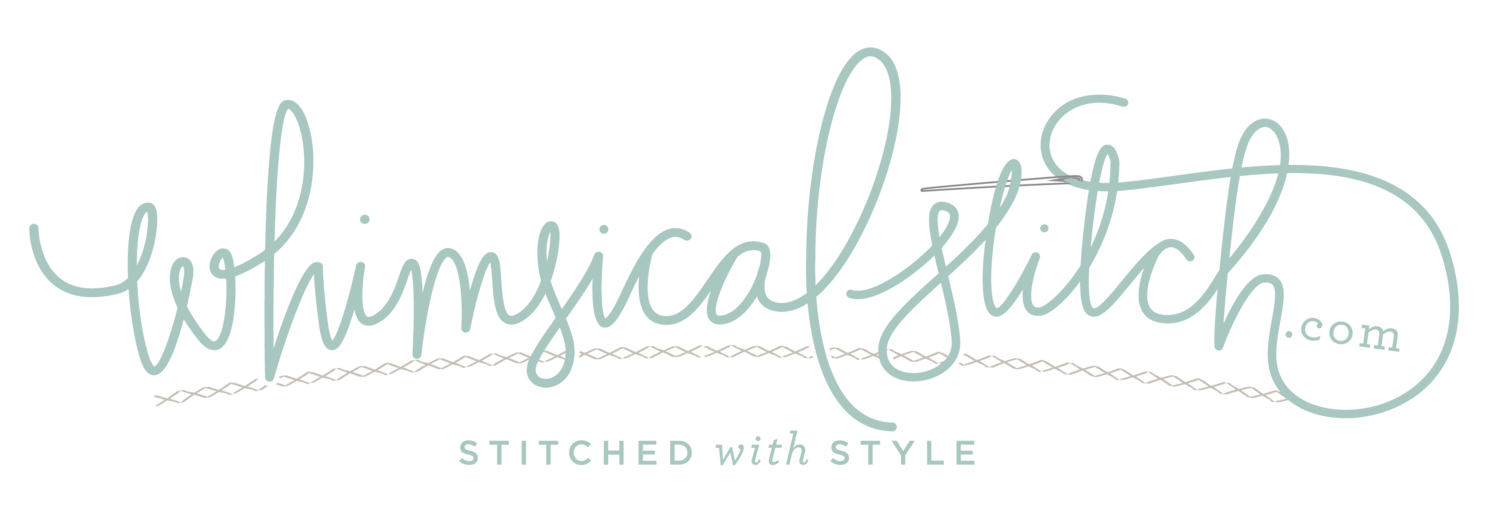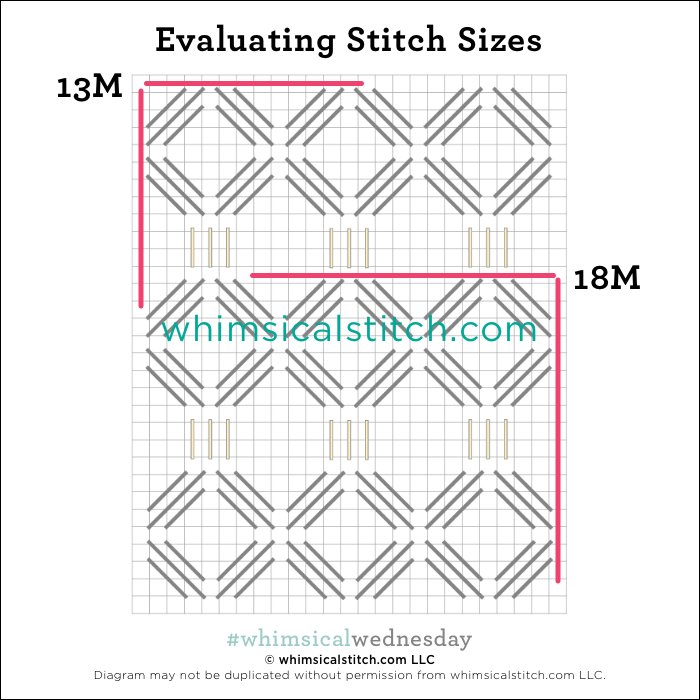One of the most popular stitches from Volume 3 (using the absolutely statistically relevant data points of how many posts I remember seeing about it on Instagram) is gingham. I talk a lot about scalable stitches and gingham is the perfect example. The book version was three rows wide. A student of mine went six rows wide for an adorable sports field, and I am so excited to share it with you.
The stitched sample uses two shades of green Vineyard Silk. Starting in the upper right-hand corner, add six rows of tent stitches in the first color following the diagonal path, leaving an empty row between the stitches, from the top edge down to the right side of the canvas (first diagram). Repeat with six rows in the same pattern in the second color. Continue to switch between colors every six rows. When complete, do the exact same thing, starting at the upper right edge and going down towards the lower left edge with the second color. Voila! You have gingham.
My favorite part of gingham is where the two colors mingle. My late grandmother, the math teacher, would absolutely love this stitch. Your two threads can be two of the same color family, a mix of matte and metallic, or two of your favorite colors. White and black are also great companions with a second color for a gingham stitch.
You can see how my student has already started the work to compensate around the soccer player. She is adding the rows on one side of the soccer player and will connect the areas when she gets around him. Again, the fact that every block is six rows wide or tall makes the counting easy. And, yes, you will find yourself counting to six a lot while doing this stitch. But it’s all good
Gingham is great for grass, fields, wrapping paper, linens, clothing, beach umbrellas, and virtually anything else. And once you master gingham, creating plaids will be really easy!
I hope you have the perfect spot for this stitch. Enjoy!
As you are auditioning stitches (from any stitch source), count the number of canvas threads on the diagram that match your mesh size. And there you have what an inch of the stitch will look like. Evaluate that against the area where you plan to use the stitch and make your final decision. If you start integrating this step into your stitch selection process, you may be surprised at how many stitches you think are large are much smaller than you realize.
By (sometimes) including this step in my own process, I find I am now integrating much longer stitches than I ever thought I would. I used to think a stitch six rows long was super big. I have very much changed my tune, which has helped me expand my creativity, especially for large-space stitches.
Today’s stitch diagram, along with all other #whimsicalwednesday and #smallspacesunday stitch diagrams, can also be found on a Pinterest board here. Be sure to follow whimsicalstitch.com on Facebook, Pinterest, Instagram, and Twitter.
If you like what you see on this blog, there's more. Mary’s Whimsical Stitches is a series of four books offering contemporary how-to collections of more than 200 stitches (in each volume) for all stitchers, regardless of skill level. All books include updated and sequenced diagrams from this blog, plus a collection of all-new stitches from private lessons and other class projects. Visit here to find a needlepoint retailer that carries my books.
New to needlepoint or looking for a refresher? Please download a handy how-to guide covering basic needlepoint stitches and stitch compensation techniques along with new top-line information on needlepoint materials and tools, how to handle threads, and other helpful needlepoint resources.
whimsicalstitch.com also sells Stitch Guides and Stitch Concepts for Melissa Shirley Designs, Zecca Designs, Sandra Gilmore, Purple Palm, Maggie, and Penny MacLeod, and many more. Click here to see the newest guides and click here to see the entire collection.
I hope you have the perfect spot for this stitch! Please enjoy! Have a wonderful #whimsicalwednesday!
A Note about Diagrams
I use color in diagrams to make them as clear as possible. The primary function of different colored lines is to illustrate a stitch sequence. For example, the layering of colors demonstrates you add them in that order. They can also provide ideas on integrating additional threads (one line for each color). Or, you can use the same thread for all color lines. That's where I encourage you to use your imagination for the space you are stitching!





